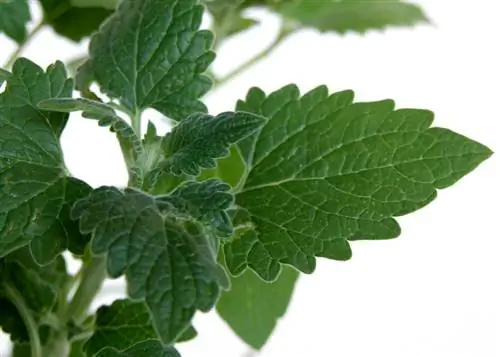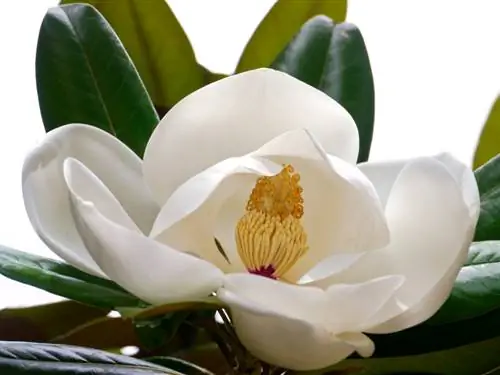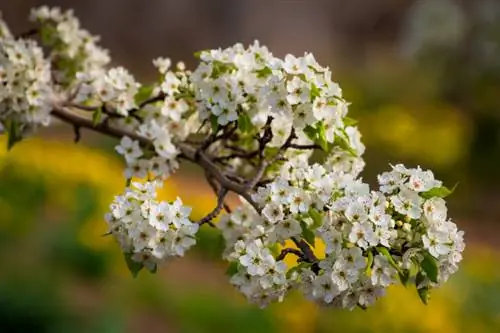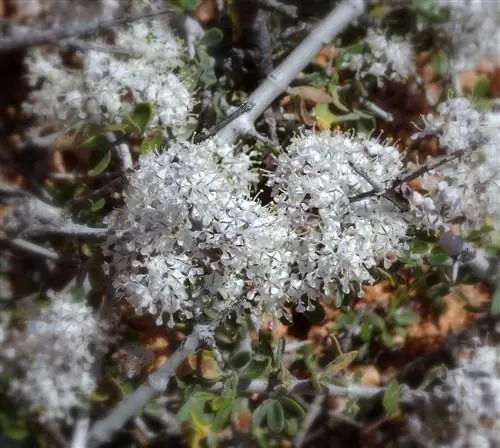- Author admin [email protected].
- Public 2023-12-16 16:46.
- Last modified 2025-01-23 11:20.
With Crabapple you can experience the art of bonsai in its most beautiful form. To ensure that the ornamental flower and fruit tree meets all expectations as a mini tree, important care requirements must be observed. This is how a crabapple thrives as a magical bonsai.
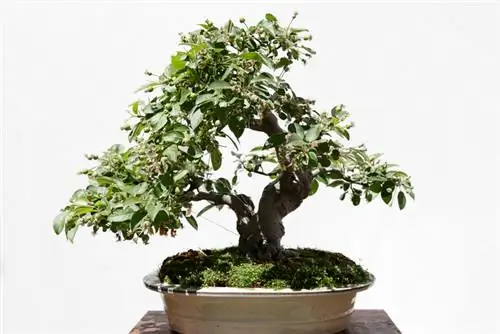
How do you properly care for a crabapple bonsai?
A crabapple bonsai requires a sunny location, regular watering and organic fertilizer. Fertilize sparingly during the growing season and only shorten branches in July. Thin out the crown in late winter and cut back shoots that are too long.
The perfect location sets the course
The best care program comes to nothing if a crabapple lacks sun. Therefore, place the bonsai pot in a sunny and warm location that is not exposed to the blazing midday sun. We also recommend a location protected from the wind outdoors so that the beautiful flowers are not ruffled.
How to water and fertilize correctly
The water and nutrient requirements of a crabapple hybrid are at the same high level as a bonsai as under normal conditions in a pot - scaled to the mini format. How to water and fertilize in the right proportion:
- Do not allow the substrate to dry out at any time
- On warm summer days, water several times a day if necessary
- Fertilize sparingly in March/April
- Increase the nutrient supply in proportion to flowering and fruit set
We recommend using an organic bonsai fertilizer (€8.00 on Amazon). With preparations such as Bio C3 fertilizer or Saidung Ultra, you can specifically avoid the risk of salinization. At intervals of 14 days, apply 1 tablespoon of fertilizer granules per 50 square centimeters of substrate surface and water again. In August, switch to a potassium fertilizer to increase winter hardiness. From September onwards, stop nutrient intake until February.
Incision requires a rethink
When it comes to pruning, the crabapple is out of the ordinary as a bonsai. So that you can fully enjoy magnificent flowers and a distinctive fruit display, continuous cutting is not recommended. Instead, let the tree grow unhindered until July. Only then do you use the scissors to shorten the branches.
In late winter, thin out the crown thoroughly and only shorten shoots that are too long to the desired length. On this occasion, inward-facing and too dense branches are also removed.
Tip
At a young age, vigorous growth determines the cultivation of a crabapple bonsai. At the beginning, repot the tree into a larger bowl every year. A mix of 70 percent akadama and 30 percent gravel has proven to be a suitable substrate for young trees. As you get older, the proportion of gravel is reduced to 10 percent in favor of 20 percent humus.


